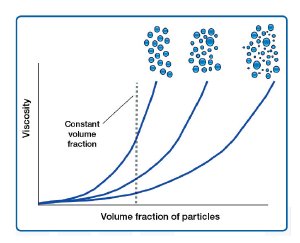'10 ways to control rheology by changing particle properties' is the latest addition to Malvern Panalytical' INFORM series of white papers, which are designed to provide advice on material characterization issues. Freely downloadable from the Malvern Panalytical website, this new document guides the reader through some of the fundamental properties of dispersed systems and demonstrates how these affect its rheology. A variety of examples illustrates the effects on rheology of changing particle size, size distribution, shape and zeta potential, alone and in combination. http://www.malvern.com/control_rheology

Many materials used today are disperse systems where one substance, often a particulate, is dispersed in another phase. Examples are common in areas as diverse as adhesives, agrochemicals, cement, ceramics, colloids, cosmetics and personal care formulations, food and drink, mining and mineral slurries, paints, inks and surface coatings, pharmaceuticals and polymer systems. The physical properties of the dispersed particles – average particle size, size distribution, zeta potential or charge on the particles, and particle shape – all influence bulk material properties such as rheology. Therefore the rheology of a dispersed system can be controlled through the measurement and manipulation of key parameters.
To download a copy of '10 ways to control rheology by changing particle properties' visit http://www.malvern.com/control_rheology
Malvern Panalytical, and Malvern Panalytical are registered trademarks of Malvern Panalytical
Malvern Panalytical provides a range of complementary materials characterization tools that deliver inter-related measurements reflecting the complexities of particulates and disperse systems, nanomaterials and macromolecules. Analytical instruments from Malvern Panalytical are used in the characterization of a wide variety of materials, from industrial bulk powders to nanomaterials and delicate macromolecules. A broad portfolio of innovative technologies is combined with intelligent, user-friendly software. These systems deliver industrially relevant data enabling our customers to make the connection between micro (such as particle size) and macro (bulk) material properties (rheology) and chemical composition (chemical imaging).
Particle size, particle shape, zeta potential, molecular weight, chemical composition and rheological properties measurements are now joined by advanced chromatography solutions (GPC/SEC), extending Malvern Panalytical's technologies for protein molecular weight, size and aggregation measurements, and synthetic polymer molecular weight and distribution. The company's laboratory, at-line, on-line and in-line solutions are proven in sectors as diverse as cement production and pharmaceutical drug discovery.